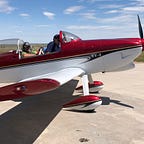de Havilland and Brabazon
A camel, someone once said, is a racehorse designed by a committee. While politically incorrect, there is a grain of truth to the quip. Committees, prone as they are to be headed by politicians and rife with internal disagreement, rarely if ever come up with innovative, useful ideas.
One such beast, though, went onto to have a huge impact on civil aviation, albeit in a serendipitous manner. Let’s start at Christmas 1942 — the Second World War had been raging for over three years, but for the first time there was hope that the Allies would prevail.
The Japanese Navy had been decisively beaten at Midway, a bloody battle at Guadalcanal had stalled the relentless advance of the ‘Rising Sun’ in the Pacific, while a stalemate at Imphal kept India secure. On the eastern front, Stalingrad was a quagmire that was grinding the mighty Wehrmacht to dust. Even Rommel’s Afrika Korps had been stopped at El Alamein. While the tide had not ebbed yet, it appeared to be turning.
Winston Churchill, ever the visionary and striving to preserve the Empire, decided it was time to start planning for the aftermath of the war. The British PM, a great proponent of aviation, decided that Britain needed to claw back the progressive ground it had ceded to the USA. Obsessed with producing fighter aircraft for the defense of Britain, Churchill now wanted large transport aircraft…
